
Cruising the Bay at 1500 Feet
Saturday was a stunning day to be cruising the Bay. Though, this time, we did it from about 1500 feet. The view is a little different than from sea level.
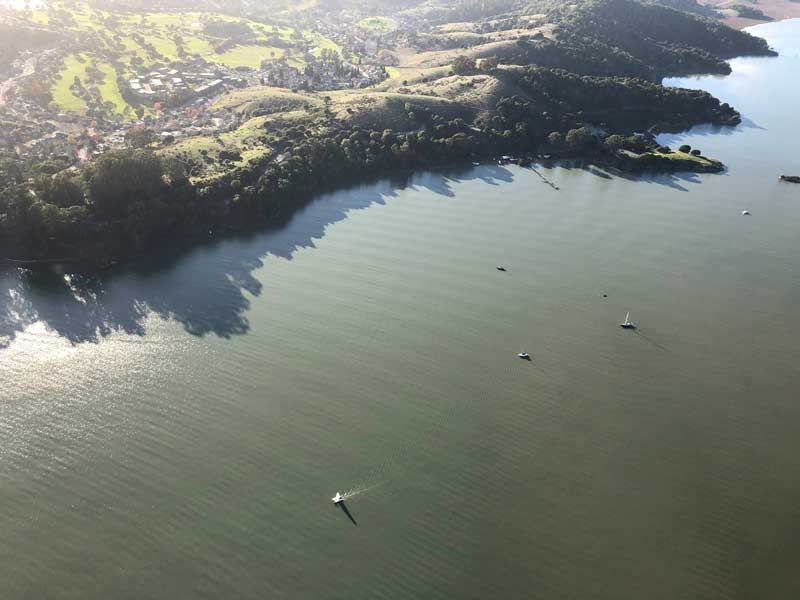
©2018Latitude 38 Media, LLC
The Bay Area looks as magical as ever from a small plane, though the two-dimensional experience of sailing is certainly quieter than the three-dimensional experience of flying. And, while we love drone footage (archaic term), it’s really cool to be up there yourself.

©2018Latitude 38 Media, LLC
Captains Courageous on the Big Screen
As a movie buff who spent endless hours of adolescence watching movies from the ’30s and ’40s on TV channels with high numbers (like 36, 40 and 44), usually worn-out prints badly chopped up by do-it-yourself used-car-dealer ads, this editor can only wonder how she managed to miss seeing Captains Courageous. It’s a black and white film from 1937 starring multiple legends of the silver screen such as Spencer Tracy, Lionel Barrymore, Mickey Rooney and more. The film was even featured as Latitude’s Movie Club selection in October.
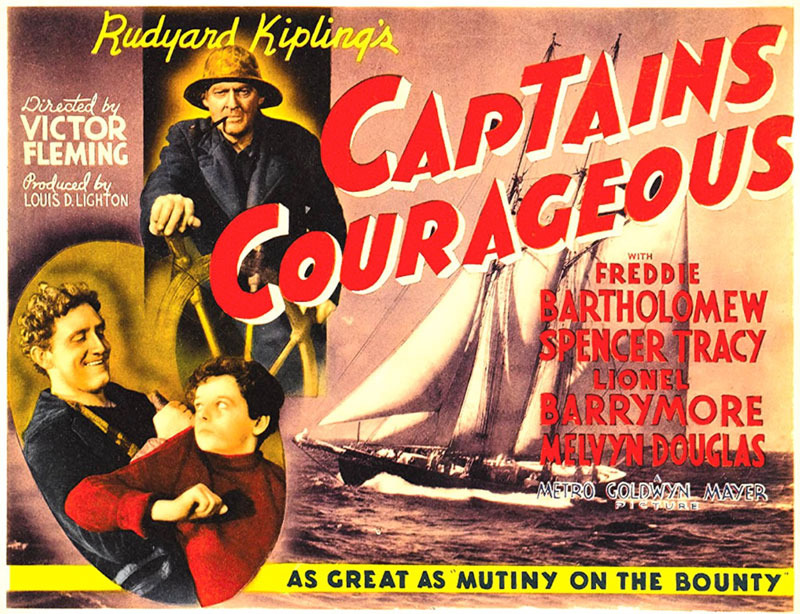
As luck would have it, Latitude 38 and Spaulding Marine Center will rectify that oversight this Friday, January 12, when the film will be screened — for free — at Spaulding in Sausalito. Doors will open at 6 p.m. and the reels will roll at 6:30. Spaulding will have beer, wine and popcorn available to purchase. We hope to see you there, whether this will be your first time viewing the classic adventure on the high seas — or the fifth.
Hall of Fame Accepting Nominations
The National Sailing Hall of Fame accepts nominations any time, but only those received by midnight (Pacific Time) on March 30 will be considered for this year’s class of Inductees. (Nominations received after March 30 will be included for consideration for the Class of 2019.)
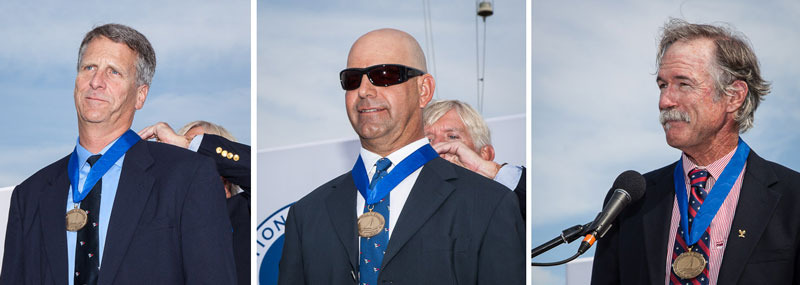
Nominating categories:
- The Sailing Category recognizes achievements made on the water as a Sailboat Racer, Cruiser or Offshore Sailor.
- The Technical Category recognizes those who have significantly contributed to the technical aspects of sailing. Examples include Designers, Boat Builders, Sailmakers, etc.
- The Contributor Category recognizes those who have made other significant contributions to the American sailing experience. Examples include Teachers, Coaches, Administrators, Media (including authored works, TV, film, etc.), Artists, Musicians, Promoters and Organizers.
You can nominate almost anyone from American sailing past or present — a racer, cruiser, pioneer, inventor, naval architect, author, instructor, musician — anyone who has made a significant contribution to American sailing.
Your candidate must:
- Be a US citizen. Although if someone of international birth has made a significant impact on the development of the sport of sailing here in the United States, they may be nominated.
- Be 45 years of age or older. Posthumous nominations may be made five years postmortem or in the year the deceased would have reached 45 years of age, whichever is sooner.
Your nomination should be convincing. Build a case for why your nominee should enter the Hall of Fame:
- List accomplishments in and contributions to the world of sailing — races won, inventions, publications, awards, other recognitions, etc.
- List of notable accomplishments and contributions outside of sailing that you feel should be considered.
- A list of articles, web pages, photos, videos or other publications is helpful.
- All of this information should be condensed to a clear and concise argument for your candidate.
- Please keep in mind that the final document prepared for each candidate submitted to the Nominating Committee is limited to just two pages — so be detailed but brief.
One nomination is all it takes: It’s a nomination, not a vote. One nomination by any one person is all it takes for a candidate to be considered by the Nominating Committee. Submitting duplicate nominations or engaging others in a ‘campaign’ for your person only adds to the burdens placed on the NSHOF volunteers.
To learn more, including tips and videos on how to prepare your candidate’s information for submission, see www.nominate.nshof.org.
Kris Larsen and the ‘Kehaar Darwin’
Last Wednesday in ‘Lectronic Latitude, we reported on a "Strange Boat Rescued off Maui." One reader commented: "Every man and woman who owns a boat, loves their boat above others. It’s just not good manners to disrespect another person’s boat." Curious and inspired, we looked for more information on the homemade, engineless junk-rigged vessel Kehaar Darwin and her skipper Kris Larsen, an interesting character with lots of ocean miles. (Technically the vessel is just called the Kehaar . . . Darwin is the boat’s port of call, and has mistakenly been added to the name.)
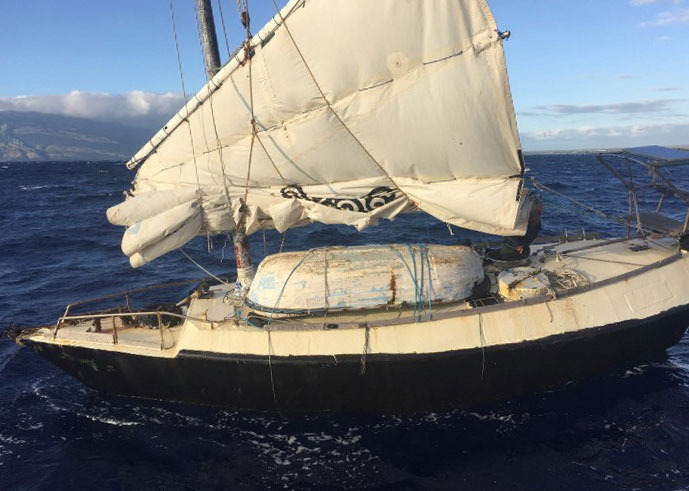
Larsen is the author of Monsoon Dervish, a book that documents many of his travels at sea, as well the ethos behind his lifestyle. It’s also the title of his website, which includes excerpts from his writings. Larsen is described as a middle-aged carpenter and navigator who has "criss-crossed the Indian Ocean and the Western Pacific for seven years, from Australia to Madagascar and Japan, covering a total of 45,000 miles." The Kehaar is described as a 31-ft Chinese junk with no engine, electricity, radio, GPS or compass.
On the Junk Rig Association web page, several junk devotees took issue with the USCG calling the tow a ‘rescue’. "We were once visited by the Spanish authorities, because we were acting suspiciously," wrote one member. "It was nearly calm and we had been making minimal progress for about three days. Sailing instead of motoring is apparently suspicious activity." Another member said that, "Contrary to reports, the [Kehaar’s] sail was not in poor shape. It may be a classic case of people not understanding junk rigs. They can look untidy when furled or reefed." We recall more than one occasion when our sails looked like a college dorm room.
And Natalie Uhing, Kris Larsen’s partner, was quoted in the Sydney Morning Herald as saying, "This is very ordinary in the sailing world. I don’t understand what the fuss is about. Much ado about nothing, trust me. He asked for a tow, the guy called the Coast Guard. A boat without an engine or technology seems to be the cause of all the excitement."
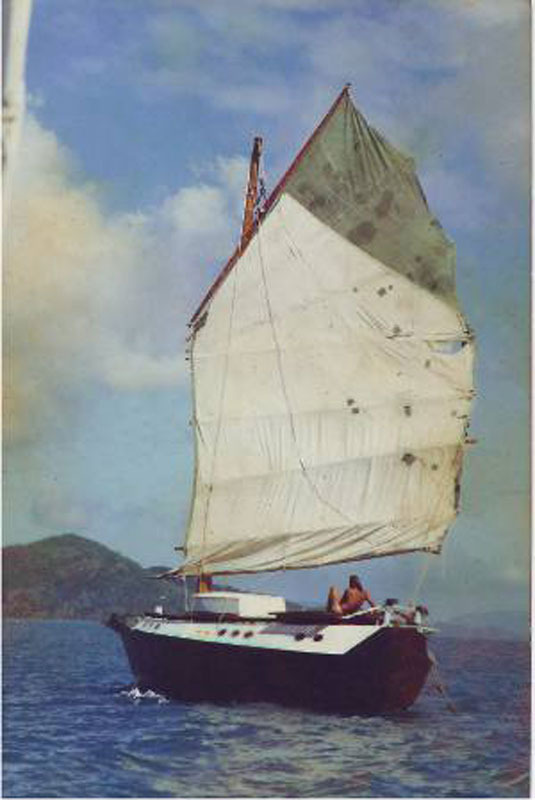
Larsen was featured in a 1999 Cruising World article by James Baldwin. Born in Czechoslovakia, Larsen "had gone from picking fruit in Europe to sandblasting ships in Singapore to digging for gold in New Zealand." He married, and worked on building houses and shearing sheep in Tasmania before experiencing a "few bad breaks, which [Larsen] now blames on a weakness for Aussie beer." He would end up divorced and homeless before quitting booze and preparing for his dream of sailing. (Baldwin’s article has been expanded into an excerpt from his book, The Next Distant Sea.)
After purchasing the unfinished steel hull that would become the Kehaar, Larsen, like many self-sufficient adventurers, used recycled materials to outfit her, including "hardwoods from junked picnic tables and church pews." Larsen left Tasmania, cruised the Great Barrier Reef, and eventually ended up in Darwin, Australia, "with the vague notion of continuing on to Africa." In Darwin, he joined a yacht club, "the members of which were mainly like-minded outcasts from mainstream society." Larsen was quoted as saying that, "If you didn’t have a cupboard full of skeletons, you wouldn’t turn up in Darwin in the first place." Larsen would eventually sail to Mauritius, then on to Madagascar and Durban, South Africa, where government officials reportedly considered holding the Kehaar until he had "proper registration, an engine, a VHF radio and a life raft."
Which brings us back to Larsen’s arrival in Maui last week. With sailors such as Rimas Meleshyus or the curious case of the Sea Nymph, many in ‘The Land of the Free’ have a hard time letting people pursue their own path, though much of that concern seems to come from issues of taxpayer expense, rather than a respect for individuals and ‘free choice’.
Larsen’s 45,000 miles demonstrate why none of us should judge a book by its cover. Glenn Tieman is another case in point. Known as one of the world’s thriftiest cruisers, Tieman has sailed thousands of miles in his homebuilt 38-ft cat Manu Rere, and uses kerosene lamps on his boat, while Larsen uses candles on his.
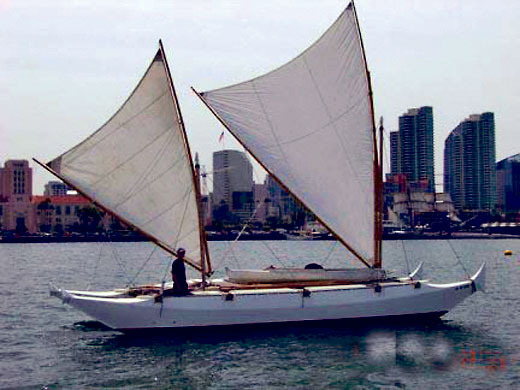
"Fortunately, [the] media scrum has had no impact on Kris, whatsoever," wrote Natalie Uhing on her blog (Uhing has sailed with Larsen before, and works as an artist in Darwin). "What others say he can or can’t do isn’t [Kris’] problem. In fact, he quite enjoys playing the ‘gormless idiot’ in the presence of scandalized, angry ‘proper sailors’. It makes them feel good about themselves, they pronounce him a lost cause, and swagger off with a ripping good story to tell The Boys back at the yacht club, leaving him alone to get on with his plans."
But Uhing reminded us that Larsen is not an "arrogant and unlikeable maverick. A maverick he is, for sure, but not actually one that you’d take a personal dislike to. He doesn’t brag about what he does, is unassuming and grateful, and he is always respectful (especially when confronted by critics, preferring to hold his peace and cultivate the other person’s tolerance, than to beat his chest and defend his sailing practice)."
Larsen, Tieman and many others challenge what is considered the sailing norm. While some people are fussing ashore, they’re off enjoying life as they like it.
We’re curious to hear what you think.
This article has been updated.
